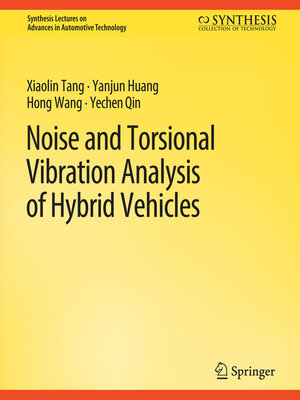Noise and Torsional Vibration Analysis of Hybrid Vehicles
ebook ∣ Synthesis Lectures on Advances in Automotive Technology
By Xiaolin Tang

Sign up to save your library
With an OverDrive account, you can save your favorite libraries for at-a-glance information about availability. Find out more about OverDrive accounts.
Find this title in Libby, the library reading app by OverDrive.



Search for a digital library with this title
Title found at these libraries:
| Library Name | Distance |
|---|---|
| Loading... |
Thanks to the potential of reducing fuel consumption and emissions, hybrid electric vehicles (HEVs) have been attracting more and more attention from car manufacturers and researchers. Due to involving two energy sources, i.e., engine and battery, the powertrain in HEVs is a complicated electromechanical coupling system that generates noise and vibration different from that of a traditional vehicle. Accordingly, it is very important to explore the noise and vibration characteristics of HEVs. In this book, a hybrid vehicle with two motors is taken as an example, consisting of a compound planetary gear set (CPGS) as the power-split device, to analyze the noise and vibration characteristics. It is specifically intended for graduates and anyone with an interest in the electrification of full hybrid vehicles.
The book begins with the research background and significance of the HEV. The second chapter presents the structural description and working principal of the target hybrid vehicle. Chapter 3 highlights the noise, vibration, and harshness (NVH) tests and corresponding analysis of the hybrid powertrain. Chapter 4 provides transmission system parameters and meshing stiffness calculation. Chapter 5 discusses the mathematical modeling and analyzes torsional vibration (TV) of HEVs. Finally, modeling of the hybrid powertrain with ADAMS is given in Chapter 6.







